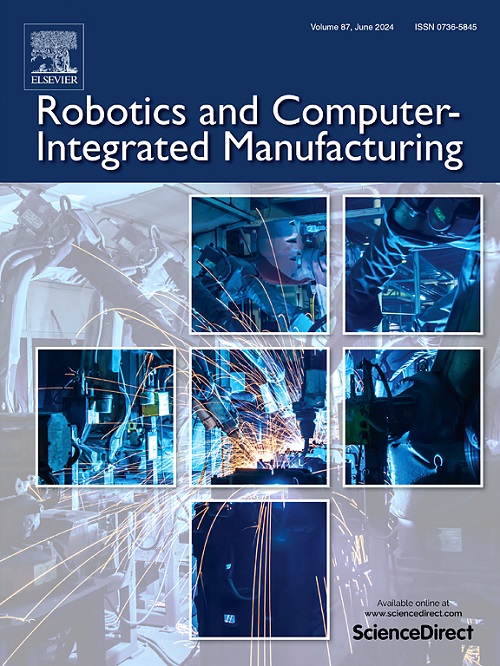Data-driven modeling and integrated optimization of machining quality and energy consumption for internal gear power honing process
IF 9.1
1区 计算机科学
Q1 COMPUTER SCIENCE, INTERDISCIPLINARY APPLICATIONS
引用次数: 0
Abstract
The internal gear power honing process is increasingly used in the gear machining of electric vehicles due to superior tooth surface quality. Most of the existing work only investigates the quality improvement of gear machining processes, and focuses little attention on energy saving. However, the total rated power of multi-axis motion for gear honing process reaches 60 kW, which has great energy-saving potential. To this end, this article proposes a data-driven modeling and integrated optimization method of machining quality and energy consumption for internal gear power honing process. The machining quality formation mechanism and energy consumption characteristics of gear honing process are first analyzed. A gradient-enhanced Kriging (GEK) method is then used to establish data-driven tooth profile form deviation model and energy consumption model. Furthermore, an integrated honing process optimization model considering tooth profile form deviation and energy consumption is constructed. An improved multi-objective coati optimization algorithm (IMOCOA) is used to solve the optimization problem. The experimental results show that the R-square of the GEK model reaches 0.99, which has superior modeling accuracy compared with other methods. The optimization results demonstrate that compared with the empirical scheme, the proposed integrated optimization model reduces the tooth profile form deviation and energy consumption by 38.46 % and 10.26 %, respectively. Moreover, the developed IMOCOA also presents competitive algorithm performance. The proposed integrated optimization scheme significantly balances honing machining quality and energy consumption.
内齿动力珩磨加工质量与能耗的数据驱动建模与集成优化
内齿动力珩磨工艺因其具有良好的齿面质量,在电动汽车齿轮加工中得到越来越多的应用。现有的工作大多只对齿轮加工工艺的质量改进进行研究,而对齿轮的节能问题关注较少。而齿轮珩磨加工的多轴运动总额定功率达到60 kW,具有很大的节能潜力。为此,本文提出了一种内齿轮动力珩磨加工质量与能耗的数据驱动建模与综合优化方法。首先分析了齿轮珩磨加工质量的形成机理和能耗特点。然后采用梯度增强克里格(GEK)方法建立数据驱动的齿廓形状偏差模型和能耗模型。在此基础上,建立了考虑齿形偏差和能耗的整体珩磨工艺优化模型。采用改进的多目标coati优化算法(IMOCOA)来解决优化问题。实验结果表明,GEK模型的r平方达到0.99,与其他方法相比具有更高的建模精度。优化结果表明,与经验方案相比,所提出的综合优化模型齿形偏差和能耗分别降低了38.46%和10.26%。此外,所开发的IMOCOA也具有较好的算法性能。提出的综合优化方案显著地平衡了珩磨加工质量和能耗。
本文章由计算机程序翻译,如有差异,请以英文原文为准。
求助全文
约1分钟内获得全文
求助全文
来源期刊
CiteScore
24.10
自引率
13.50%
发文量
160
审稿时长
50 days
期刊介绍:
The journal, Robotics and Computer-Integrated Manufacturing, focuses on sharing research applications that contribute to the development of new or enhanced robotics, manufacturing technologies, and innovative manufacturing strategies that are relevant to industry. Papers that combine theory and experimental validation are preferred, while review papers on current robotics and manufacturing issues are also considered. However, papers on traditional machining processes, modeling and simulation, supply chain management, and resource optimization are generally not within the scope of the journal, as there are more appropriate journals for these topics. Similarly, papers that are overly theoretical or mathematical will be directed to other suitable journals. The journal welcomes original papers in areas such as industrial robotics, human-robot collaboration in manufacturing, cloud-based manufacturing, cyber-physical production systems, big data analytics in manufacturing, smart mechatronics, machine learning, adaptive and sustainable manufacturing, and other fields involving unique manufacturing technologies.

 求助内容:
求助内容: 应助结果提醒方式:
应助结果提醒方式:


